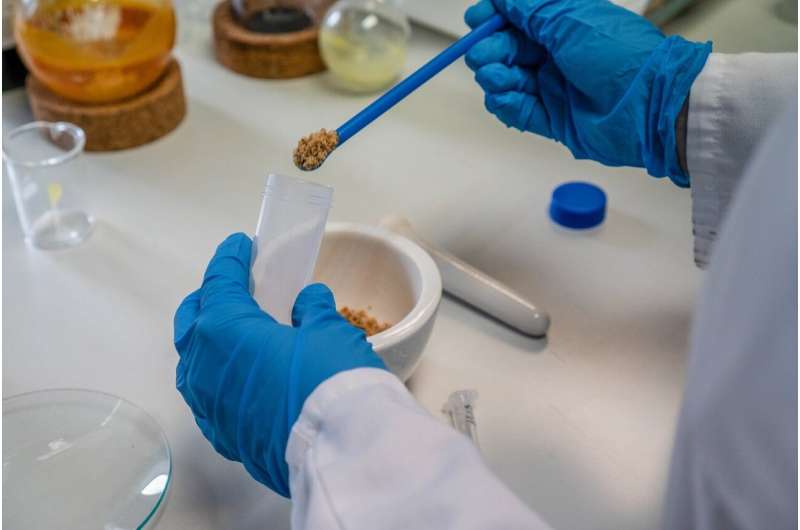Researchers develop a new device to detect gluten more efficiently

Close to 1 percent of the worldwide population suffers from coeliac disease, a complex and autoimmune disorder caused by ingesting gluten and for which there is no treatment beyond removing it from the person's diet. In Spain, National Coeliac Day is held every 27 May to raise awareness on the disease and provide visibility and support for people who have coeliac disease.
Detecting gluten is a key element for coeliac patients to keep the disease under control, as well as for the food industry, whose regulation forces them to declare its presence in food. In this line, a team of researchers coordinated by Polytechnic University of Valencia (UPV) professor and scientific director of the CIBER in Bioengineering, Biomaterials and Nanomedicine (CIBER-BBN), Ramón Martínez Máñez, is working on developing intelligent methods to detect gluten, to prevent the accidental ingestion of this protein while collaborating in regulating and fighting against fraud in the food industry.
The study, recently published in Analytica Chimica Acta reveals a new system that enables the fast detection of gluten through a simple signaling process. According to the authors, it could be the basis for developing portable, fast, sensitive and simple-use systems to monitor gluten in food.
Already validated in real food samples
"The biosensor is comprised by nanoporous anodic alumina films loaded with a fluorescent dye and capped with an aptameter (a DNA or RNA molecule) that specifically recognizes gliadin, gluten's soluble protein," explains M. Carmen Martínez Bisbal, professor at the University of Valencia (UV), researcher at the CIBER-BBN and at the Interuniversity Research Institute on Molecular Recognition and Technological Development (IDM UPV-UV) and one of the authors of the study.
"In the presence of gliadin, the aptameter moves from the surface of the biosensor, resulting in the pores opening and the signaling dye being released," adds Sara Santiago Felipe, researcher at the La Fe Health Research Institute, of the CIBER-BBN and IDM UPV-UV and author of the study.
The new sensor has been validated in real food samples, making it possible to detect gluten via a simple signaling process, with great potential to be used in food control. "We have confirmed that it has a detection limit of 100 µg kg-1 of gliagin, good selectivity and a detection time of 60 minutes," explains Luis Pla, first signee of the study and researcher at the CIBER-BBN and IDM UPV-UV.
"Our results can be the basis to develop portable, simple, fast and sensitive systems to detect gluten, which can be easily adjusted by using different molecules, providing great potential for allergen tests," concludes Ramón Martínez Máñez.
More information: Luis Pla et al, A fluorogenic capped mesoporous aptasensor for gluten detection, Analytica Chimica Acta (2020). DOI: 10.1016/j.aca.2020.12.060
Journal information: Analytica Chimica Acta
Provided by Asociacion RUVID


















